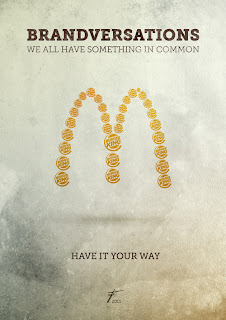http://www.komar.com/Images/categories/Book%20Binding.png
While putting my menu project together the biggest problem that I had across was binding.
First I was going to use a large staple like clip that would go through all of the pages much like how a duo tang is put together. This turned out to be too over powering over my simple cover of my menu. The next idea I tried was saddle stitching. This turned out to be the easiest and quickest method of getting a clean look and was also affordable.
If I had looked into different binding methods earlier or had more time to try different methods I could have used one of the following:
PAPERBACK
Paperback book binding is another way to bind a book. All novels, some comic books, some textbooks etc, basically any paperback needing binding, have paperback binding. The term "paperback" means that the covers of books are like paper. They are thicker than the inner pages to give the feeling of cover, but don't offer the same protection to pages as a hardcover book does.
Paper back binding is fairly simple, and you can bind paperback books at home after learning the process. Many people have found this useful and use this book binding style to do it by themselves.
Many authors who want to self publish but are not able to afford publishing houses, as well as book binding hobbyists who want to bind their own books, are using the paperback book binding method to bind their own books at home. Paperback binding is one of the more simple dyi book binding methods.
HARDCOVER
Another commonly seen binding is hardcover binding. It is a great way to protect books and help them to last much longer. You can see hardcover book binding in encyclopedias, thick books, diaries, and many other books. In hardcover books, a thick cover is attached with the help of special glue.
Hardcover binding can also be done at home but it requires more effort. The different steps involved are making signatures, poking holes in the signatures, sewing (probably the hardest part of this style of book binding), making the cover, and finally attaching the cover to the stack of signatures.
The result of this style of binding is well worth the effort, as the final product is beautiful and will protect your projects.
YOTSUME TOJI
The Yotsume Toji is a very simple Japanese Bookbinding method. The name may sound as if it is a very hard type of binding books. But it simply means four holes. So if you hear about "4 holes book binding," it's basically the same style of book binding method as the the Yotsume Toji.
In this binding four holes are made at one edge of the book. Then it is sewn in a particular fashion to get the Yotsume Toji Binding. It is good for repairing books and to create your own small books.
In this binding four holes are made at one edge of the book. Then it is sewn in a particular fashion to get the Yotsume Toji Binding. It is good for repairing books and to create your own small books.
COPTIC
Coptic binding is one of the oldest type of bookbinding which was practised by the Copts in Egypt. It is also simple and you can try it now itself.
In this binding there is no spine because of which the book can be folded so that both the covers touch each other and it will not be damaged.
Two covers are placed above and below the papers and it is sewed through one edge. There are different methods of sewing. Some of them are easy while others are difficult. I always advice to start with easy ones and then go for the difficult ones.
THERMAL
Thermal binding is one of the recently developed type of bookbinding. In this method lose pages are secured or joined with a strip of plastic or tape and then fused with heat. It is similar to the perfect binding method where the pages are glued together.
This method is used mainly for office documents and presentations. It gives a neat and sturdy look to the finished books. Sometimes it is also referred to as Velo binding.
BELGIAN
The "Secret Belgian Bookbinding" is a method of bookbinding that uses a very unique style of exposed sewing to bind a text block to the cover boards and spine, creating an outside stitching pattern that is unmatched. The cover is usually made using three separate pieces: the front cover, the back cover, and the spine piece.
The covers are attached by sewing thru holes on the cover boards and passing over and then under the spine piece. The sewn text block is attached when the threads that pass under the spine piece also pass through the stitches on the spine of the main text block.
The spine piece is held in place only by these threads passing over and under it. It creates an interesting thread pattern on the cover and it is a very sturdy binding that allows the book to open completely flat.
The true origin of this binding style is not certain but may have been developed between the fourteenth and sixteenth centuries in Belgium. It was probably some bookbinder's "secret method" and therefore was not well known until it was rediscovered centuries later.
http://classes.dma.ucla.edu
Information from:http://www.squidoo.com/waystobindabook
































